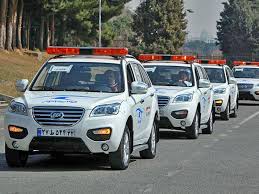Introduction to Vehicles
Vehicles are an integral part of modern life, facilitating transportation for individuals and goods across cities, countries, and continents. From simple bicycles to complex electric cars, vehicles come in a myriad of shapes and sizes, designed to meet various alquiler de coches aeropuerto fuerteventura. This article explores the different types of vehicles, their technologies, and emerging trends shaping the future of transportation.
Types of Vehicles
- Motor Vehicles
- Cars: The most common form of personal transportation, cars are designed for passenger travel. They come in various styles, including sedans, SUVs, hatchbacks, and coupes.
- Motorcycles: Two-wheeled vehicles that offer a more agile mode of transportation, motorcycles are popular for their speed and efficiency, particularly in urban environments.
- Trucks: Designed for transporting goods, trucks vary in size from light-duty pickups to heavy-duty freight trucks. They play a crucial role in logistics and supply chain management.
- Buses: Larger vehicles designed to carry multiple passengers, buses are commonly used in public transportation systems and can be found in various forms, including city buses, school buses, and coach buses for long-distance travel.
- Non-Motor Vehicles
- Bicycles: Two-wheeled non-motorized vehicles that promote eco-friendly transportation. Bicycles are popular for commuting, recreation, and fitness.
- Scooters: Both electric and manual scooters provide a convenient way to navigate urban areas, particularly for short distances.
- Trains: Rail vehicles that transport passengers and goods over long distances. Trains are essential for efficient mass transit and freight transport.
- Specialized Vehicles
- Emergency Vehicles: Includes ambulances, fire trucks, and police cars, designed to respond quickly in emergencies.
- Construction Vehicles: Heavy machinery such as bulldozers, excavators, and cranes used in construction and infrastructure development.
- Agricultural Vehicles: Tractors and harvesters designed for farming tasks, improving efficiency and productivity in agriculture.
Key Technologies in Vehicles
- Internal Combustion Engine (ICE): The traditional engine type that powers most vehicles, utilizing gasoline or diesel to create power through combustion.
- Electric Vehicles (EVs): Vehicles powered by electric motors, using batteries to store energy. EVs are gaining popularity due to their lower environmental impact and reduced operating costs.
- Hybrid Vehicles: Combine an internal combustion engine with an electric motor, offering the benefits of both power sources. Hybrids can switch between or combine power from both systems.
- Autonomous Vehicles: Self-driving cars that use a combination of sensors, cameras, and artificial intelligence to navigate without human intervention. This technology promises to revolutionize transportation by improving safety and reducing congestion.
- Connected Vehicles: Incorporate internet connectivity and communication systems that allow vehicles to interact with other vehicles, infrastructure, and the internet, enhancing navigation, safety, and convenience.
The Future of Vehicles
- Sustainability: As concerns about climate change and pollution grow, the automotive industry is shifting toward sustainable practices. This includes increased production of electric and hybrid vehicles, as well as the exploration of alternative fuels such as hydrogen.
- Shared Mobility: The rise of car-sharing and ride-sharing services has transformed how people view vehicle ownership. Services like Uber and Lyft have made it easier to access transportation without owning a vehicle.
- Smart Cities: The integration of vehicles with urban infrastructure aims to create smart cities, where traffic management, parking, and public transportation systems are optimized through technology, reducing congestion and improving efficiency.
- Advancements in Safety: Innovations in safety technologies, such as automatic emergency braking, lane departure warnings, and collision avoidance systems, are making vehicles safer for passengers and pedestrians alike.
Challenges in the Vehicle Industry
- Infrastructure Development: As electric and autonomous vehicles become more prevalent, the need for charging stations and smart infrastructure is critical to support their widespread adoption.
- Regulatory Issues: Governments must create regulations that address the challenges posed by new vehicle technologies, particularly in the areas of safety, emissions, and data privacy.
- Consumer Acceptance: While technology advances, consumer acceptance of new vehicle types, particularly autonomous vehicles, remains a significant hurdle. Building trust in these technologies is essential for their successful integration into everyday life.
Conclusion
Vehicles have evolved dramatically over the years, becoming essential components of our daily lives and the global economy. Understanding the different types of vehicles, their technologies, and emerging trends provides insight into the future of transportation. As we move toward a more sustainable and technologically advanced world, vehicles will continue to play a pivotal role in shaping how we travel and interact with our environment.
